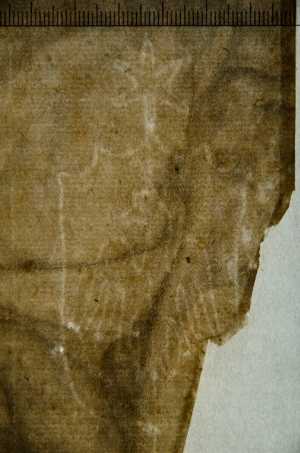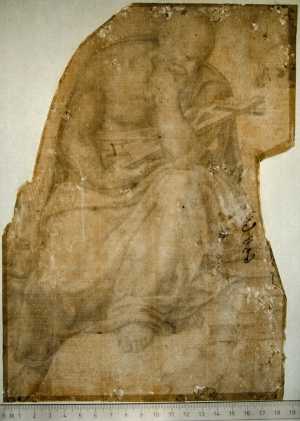Specifications
| Title | St Jerome in Meditation, after Michelangelo |
|---|---|
| Material and technique | Black chalk |
| Object type |
Drawing
> Two-dimensional object
> Art object
|
| Location | This object is in storage |
| Dimensions |
Height 258 mm Width 185 mm |
|---|---|
| Artists |
Attributed to:
Marcello Venusti
|
| Accession number | DN 124/21 (PK) |
| Credits | Gift Dr A.J. Domela Nieuwenhuis, 1923 |
| Department | Drawings & Prints |
| Acquisition date | 1923 |
| Creation date | in circa 1550-1557 |
| Watermark | Eagle in a shield, surmounted by a six-pointed star (large fragment, 90 x 43 mm, upside-down, found under the saint’s right leg, to the right of the lion’s head, vH, 5P), nothing similar in Briquet; subtype with star not in Piccard Online |
| Inscriptions | 'JHG9' (verso, pen and brown ink) |
| Collector | Collector / Adriaan Domela Nieuwenhuis |
| Provenance | Boguslaw Jolles (-1912, L.381), Dresden/Vienna; his sale, Munich (Helbing) 28.10.1895, lot 638 (Marcello Venusti after Michelangelo, DM 12,5); Dr. Adriaan J. Domela Nieuwenhuis (1850-1935, L.356b), Munich/Rotterdam, donated with his collection in 1923 (Marcello Venusti after Michelangelo) |
| Research |
Show research Italian Drawings 1400-1600 |
| Literature | C. de Tolnay 1960, no. 238, p. 216; Joannides 2007, pp. 222, 486 (after lost modello by Michelangelo, maybe by Marcello Venusti); Firpo 2008, pp. 157-166, ill. 150; Barnes 2010, ill. 3.21 |
| Material | |
| Object | |
| Geographical origin | Italy > Southern Europe > Europe |
Do you have corrections or additional information about this work? Please, send us a message

























